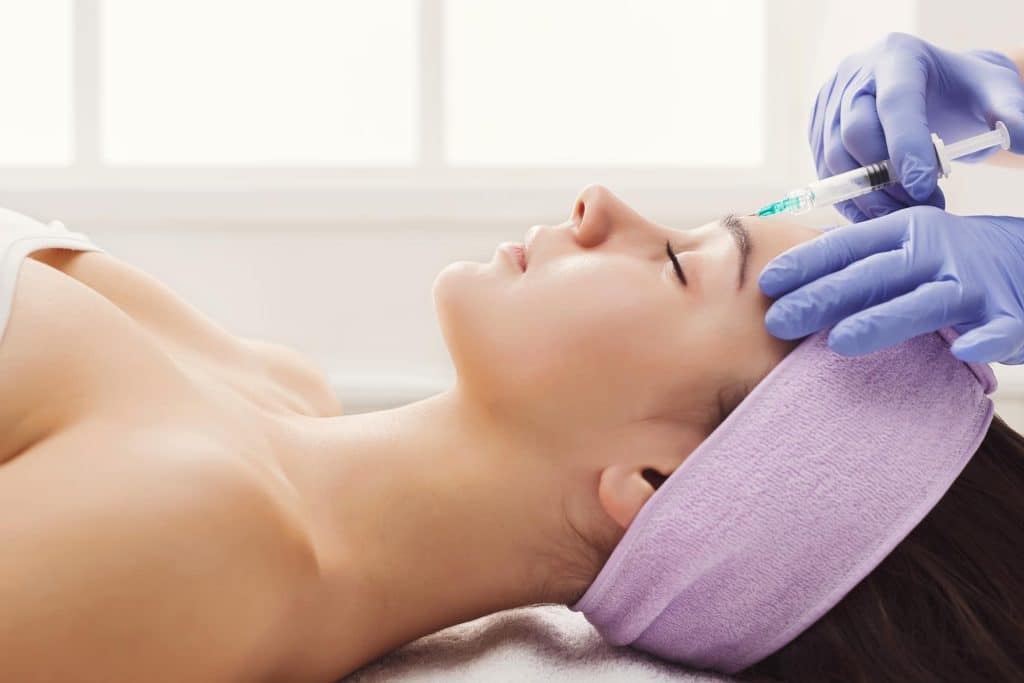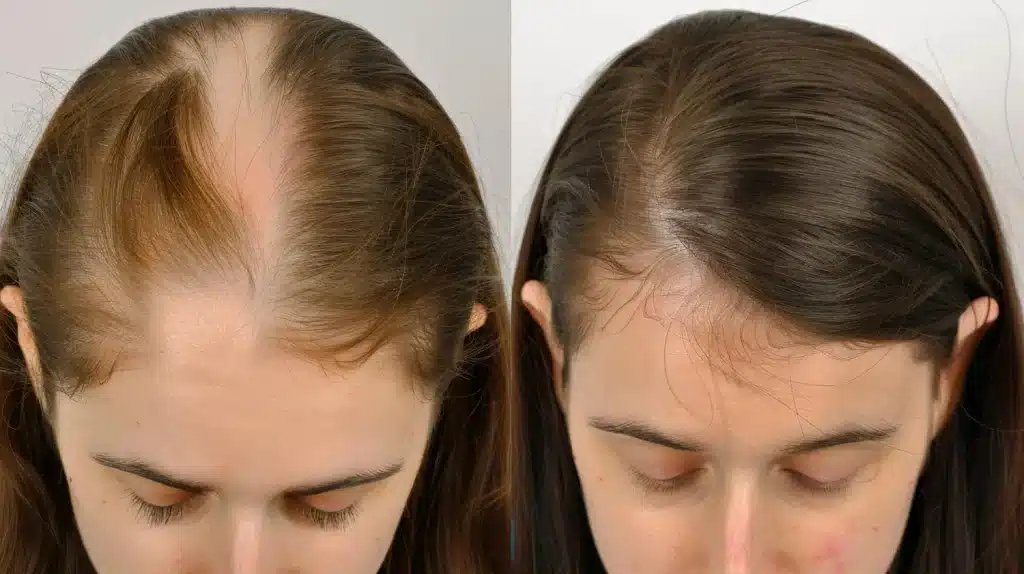Dermalax fillers from the South Korean company Across perfectly combine an affordable price and high quality. They are monophasic gels based on hyaluronic acid (HA) with constant viscosity. The HA for these fillers undergoes a multi-stage cleaning system, which minimizes possible adverse reactions.
The line includes four fillers, which all possess CE certificates.
What Is Dermalax?
The massive advantage of Dermalax fillers is that in addition to smoothing out wrinkles and skin relief, they also return lost moisture in all layers of the dermis. Hyaluronic acid, as the main component of the intercellular matrix, promotes active regeneration, migration, and division of cells, starting the elastin and collagen synthesis process. The skin is noticeably rejuvenated, the water balance is restored, and the face looks fresh and healthy again.
Dermalax dermal fillers differ among themselves in the Ha concentration and can, therefore, perform different functions:
- The lightest Dermalax Plus gel with a concentration of 20 mg/ml HA fills in small wrinkles and fine lines around the eyes and lips. The agent is injected into the surface layers of the skin.
- Dermalax Deep filler is suitable for eliminating wrinkles and folds of medium depth. This gel is administrated into the middle or deep layers of the skin and is chosen for lip augmentation and for giving soft volume to the tissues in the areas of the chin, temples, and cheekbones.
- Dermalax Deep Plus is much denser than the previous two preparations, with an HA content of 24 mg/ml. It is suitable for filling medium and deep wrinkles, including “sadness folds” and lip-chin lines, and restoring lost volume. As in the previous case, the gel is injected into the middle or deep layer of the skin.
- Volumetric Dermalax Implant Plus, with a concentration of 24 mg/ml of hyaluronate, is intended for contour volume correction, restoration of the face oval, and work on the so-called “triangle of beauty.” This filler is injected into the deep layer of the dermis.
How Do Dermalax Fillers Work?
The main active component of Dermalax fillers is cross-linked hyaluronic acid (HA) of inorganic origin with a high degree of purification from BDDE. There are no other foreign impurities in these gels that could cause allergies.
Fillers are monophasic; they contain only cross-linked HA, all molecules of which are the same size. Therefore, the gels have a homogeneous structure, are easily administered and distributed, do not form lumps, and do not provoke inflammation. Stabilization of hyaluronate with the crosslinking agent BDDE ensures strong bonds between molecules and extends the duration of action of dermal fillers.
All products of the Dermalax family contain 0.3% lidocaine, making the injection procedure comfortable and practically painless.
In addition to filling wrinkles and volume correction, these intradermal fillers perfectly moisturize the skin and start the process of self-rejuvenation by activating the process of neocollagenesis.
Potential Contraindications
Despite the safety of Dermalax fillers, the injections should not be used on minors and pregnant women, and there are several other contraindications to be aware of, as well.
Contraindications for Dermalax:
- Tendency to keloids;
- Intolerance to HA or lidocaine;
- Diabetes mellitus, disruption of the endocrine system;
- Breastfeeding;
- Oncology;
- Bronchial asthma;
- Couperosis and inflammation of the perineum;
- Autoimmune and infectious diseases;
- Problems with blood coagulation;
- Presence of herpes, burns, and wounds in the area of introduction.
Benefits of Dermalax Fillers
Dermalax fillers are popular among dermatologists due to their biocompatibility, natural-looking results, and long-standing safety record.
Here are some reasons why Dermalax products are so popular:
- Dermalax integrates smoothly with the surrounding tissues when injected, providing natural-looking and subtle results.
- Dermalax fillers offer a range of formulations with varying particle sizes and viscosities. This allows healthcare providers to customize the treatment to meet the versatile patient’s needs and desired lip enhancement.
- Adjustable results – if a patient is unsatisfied with the initial results or wants further enhancement, the doctor can adjust the treatment in the subsequent sessions.
- Dermalax treatment is a minimally invasive procedure that typically involves little to no downtime. Standard activities can be resumed very soon after the treatment.
- Dermalax provides a gradual progression of results, allowing patients to achieve the desired lip volume and shape gradually, avoiding an overly dramatic change in appearance.
- While individual results may vary, Dermalax fillers generally have impressive longevity. To keep up the desired effect, patients can opt for repeat procedures.
- Dermalax products are well-established dermal fillers with a proven safety profile when administered by qualified and experienced healthcare providers.
Potential Dermalax Side Effects
The gel in Dermalax fillers is completely biocompatible with the body, so it does not cause complications. But a few unpleasant effects can occur, like a hematoma, redness, or swelling at the injection site, which subsides in a few days.
Also, lidocaine in the Dermalax composition can cause allergic reactions. Doctors must inform the patient beforehand about the possible consequences and conduct a skin test.
Dermalax fillers are perfectly absorbed and guarantee an optimal result if the patient has no bad habits and observes a post-injection regime. After the treatment session, it is recommended to:
- Refrain from smoking and drinking alcohol for 14 days;
- Avoid solariums, spa salons, baths, and other places with temperature changes and UV radiation;
- Engage in intensive sports no sooner than a full week after the session.
Conclusion
Dermalax fillers, through many tests and studies, are proven safe and convenient, even for patients who have thin and/or sensitive skin. This is in large part thanks to the combination of highly purified hyaluronic acid with lidocaine.
Due to the different HA concentrations in the Dermalax product range, the cosmetologist can choose a product suitable for their specific tasks. Affordable prices and the longevity of the achieved results contribute to Dermalax’s frequent use in aesthetic procedures.
FAQ
Is a Dermalax filler safe?
Dermalax fillers are considered safe when administrated by an experienced injector according to all safety protocols.
Dermalax can only be applied to disinfected, well-cleansed skin to avoid severe complications and infections. There is no need to worry if there is some degree of swelling, bruising, erythema, and other side effects, as these reactions disappear within 24-48 hours. The injection zone can be lightly massaged to distribute the gel better.
What is Dermalax Plus used for?
Dermalax Plus is most effective for patients with shallow, superficial wrinkles and folds on the face and neck, problems with hyper-dryness, and loss of skin elasticity. Unlike many other dermal fillers like Sculptra, this South Korean gel prolongs the effect up to 10-12 months.
The main direction of action of this biogel is the correction of shallow wrinkles and other defects in the periorbital and perioral parts of the face and volume replenishment in the areas of the second third of the face. Dermalax Plus is guaranteed to help with the following:
- “Tear furrows” and “crow’s feet;”
- Interbrow (glabellar) folds;
- “Sorrow wrinkles” and other lip wrinkles;
- Bioreinforcement of soft tissues at the initial level;
- Hyperdryness, with reduced elasticity and smoothness of skin surface;
- Primary correction of cheekbones and lips.
Dermalax Plus can additionally be used to volumize the lips, tighten the cheekbones, and correct the shape of the chin. The filler effectively copes with the tasks of contour plastic at the first signs of changes in the structure and relief of the skin in the designated areas.
References
Qiao, J., Jia, Q. N., Jin, H. Z., Li, F., He, C. X., Yang, J., Zuo, Y. G., & Fu, L. Q. (2019). Long-Term Follow-Up of Longevity and Diffusion Pattern of Hyaluronic Acid in Nasolabial Fold Correction through High-Frequency Ultrasound. Plastic and reconstructive surgery, 144(2), 189e–196e. https://doi.org/10.1097/PRS.0000000000005848.
Suh, Joon & Oh, Chang & Im, Song & Lim, Jung & Kim, Beom & Lee, Jong. (2017). A multicenter, randomized, double-blind clinical study to evaluate the efficacy and safety of a new monophasic hyaluronic acid filler with lidocaine 0.3% in the correction of nasolabial fold. Journal of cosmetic dermatology. 16 (3). http://dx.doi.org/10.1111/jocd.12310.
Stefura, T., Kacprzyk, A., Droś, J., Krzysztofik, M., Skomarovska, O., Fijałkowska, M., & Koziej, M. (2021). Tissue Fillers for the Nasolabial Fold Area: A Systematic Review and Meta-Analysis of Randomized Clinical Trials. Aesthetic plastic surgery, 45(5), 2300–2316. https://doi.org/10.1007/s00266-021-02439-5.
Hyaluronic Acid (HA) Safety Profile. Food and Drug Administration. https://www.fda.gov/media/158489/download.
Dermalax brochure https://www.stergiougroup.eu/uploads/products/beauty-products/Dermalax-brochure-1.pdf.





















